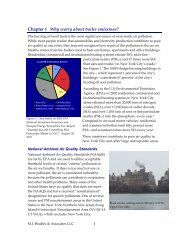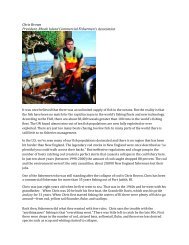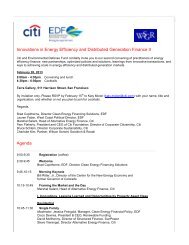What do we mean by MSY? [PDF]
What do we mean by MSY? [PDF]
What do we mean by MSY? [PDF]
- No tags were found...
Create successful ePaper yourself
Turn your PDF publications into a flip-book with our unique Google optimized e-Paper software.
Maximum Clarity about Maximum Sustainable YieldA key debate in the reform of the Common Fisheries Policy is over the proper timetables and abundancetargets for restoring European fish stocks to their Maximum Sustainable Yield, or <strong>MSY</strong>. All agree inprinciple that <strong>we</strong> want our fish stocks to recover. But the devil is in the details: How far <strong>do</strong> <strong>we</strong> want togo, and how fast can <strong>we</strong> – or should <strong>we</strong> aim to -- get there?The CFP reform debate:Should our goal be to reduce the rate of fishing (Fmsy) to a level that would be consistent withmaintaining healthy fish stocks once they recover?Or should our goal be to get our fish stocks to that healthy level of abundance or Biomass that wouldsupport fishing at that rate indefinitely (Bmsy) <strong>by</strong> a date certain (either 2015 or 2020)?Pending proposals from the Commission, Council and Parliament each approach these questionsdifferently, and use the term <strong>MSY</strong> to <strong>mean</strong> different things.EDF undertook an analysis to show what would happen if <strong>we</strong> chose one or the other of theseapproaches, given the current state of our stocks, the biological characteristics of the fish, and ourcurrent fishing practices. 1The key findings:Not all EU fish stocks <strong>we</strong> analyzed could recover <strong>by</strong> 2015, even if <strong>we</strong> <strong>we</strong>re to halt all fishingtomorrow.All but one of the stocks could recover <strong>by</strong> 2020, if <strong>we</strong> set our abundance targets and fishingrates right todayMany stocks could be restored <strong>by</strong> 2015, if <strong>we</strong> set the targets and fishing rates right todaySetting a fishing rate of Fmsy will not restore all EU stocks <strong>by</strong> 2015 or 2020; for some stocks itwould delay recovery significantly past those dates.The analysis:To help decision makers evaluate their options EDF analyzed existing data about the state of stocks andcurrent fishing rates, as <strong>we</strong>ll as the stocks’ biological characteristics, to find out:1 We used the most current year for which ICES data <strong>we</strong>re available, and applied a metho<strong>do</strong>logydeveloped <strong>by</strong> Froese and Proelss in their 2010 study [insert name/cite]. Because our analysis requireduse of current fishing mortality rates, which <strong>we</strong>re only available for 44 of the 54 stocks originallyanalyzed in the 2010 study, <strong>we</strong> cover only those 44 stocks in this analysis.
+ Which European fish stocks are biologically capable of recovering to a biomass level of Bmsy:(a) By 2015? (Frequently cited because of the EU’s commitment under the Johannesburg agreement)(b) By 2020? (Frequently cited because of the Good Environmental Status requirement of the MarineStrategy Framework Directive)(c) Within ten years? (Ten year rebuilding times are used as a benchmark in a number of other countrieswith successful fisheries)To <strong>do</strong> this part of the analysis <strong>we</strong> assumed that some rate of fishing would continue – in other words, <strong>we</strong>did not assume a fishing rate of zero. We did this because <strong>we</strong> found that recovery rates <strong>we</strong>re notsignificantly faster even if fisheries would close entirely, and <strong>we</strong> assumed that it was politically andsocially infeasible to close fisheries completely.
Here is what <strong>we</strong> found:Currently Above B <strong>MSY</strong> Achieve B <strong>MSY</strong> <strong>by</strong> 2015 Achieve B <strong>MSY</strong> <strong>by</strong> 2020 Achieve B <strong>MSY</strong> in 10 years (2022)8 stocks17 stocks (25 total stocks)18 stocks (43 total stocks)1 stocks• 3 herring stocks• 3 herring stocks• 3 cod stocks• 1 cod stock• 2 horse mackerelstocks• 2 whiting stocks• 1 had<strong>do</strong>ck stock• 3 had<strong>do</strong>ck stocks• 3 sole stocks• 2 cod stocks• 1 saithe stock• 3 had<strong>do</strong>ck stocks• 3 sole stocks• 2 herring stocks• 2 plaice stocks• 1 plaice stocks• 2 saithe stocks• 1 megrim stock• 1 sardine stock• 1 mackerel stock• 1 blue whiting stocks• 1 Norway pout stock• 1 megrim stock• 1 sprat stock<strong>What</strong> is striking is that over half of these stocks could indeed be returned to a healthy state in only a few short years if <strong>we</strong> set ambitious targets;and that nearly all of the others could get there <strong>by</strong> 2020. It is also important to note that 19 of the 44 stocks <strong>we</strong> studied are not biologicallycapable of reaching Bmsy <strong>by</strong> 2015 – even if <strong>we</strong> <strong>we</strong>re to halt all fishing. No legislative mandate can change that biological fact.
The next question <strong>we</strong> posed gets to the heart of the challenge <strong>we</strong> face: reducing current fishing to reach our desired goals. We analyzed+ <strong>What</strong> reductions in current fishing rates would be necessary:(a) To bring fishing rates in line with Fmsy?(b) To enable stocks to recover to Bmsy <strong>by</strong> 2015?(c) To enable stocks to recover to Bmsy <strong>by</strong> 2020?Reduction to Achieve F <strong>MSY</strong> Reduction to Restore <strong>by</strong> 2015 Reduction to Restore <strong>by</strong> 202034 stocks require reductions in F• Smallest reduction 2% (herringstock)• Largest reduction 76% (whitingstock)• 4 stocks are stocks that arecurrently above B <strong>MSY</strong>17 stocks• Smallest reduction 22% (mackerelstock)• Largest reduction 94% (saithestock)18 stocks• Smallest reduction 22% (megrimstock)• Largest reduction 87% (plaicestock)<strong>What</strong> <strong>we</strong> found is both sobering and encouraging. Sobering in that 34 --over three fourths of the stocks <strong>we</strong> studied -- are currently being fishedat a rate that is not sustainable even for a healthy stock (much less for the 30 out of 34 that are depleted). Some are being significantlyoverfished today.Encouraging, because <strong>we</strong> can plot out a route to recovery for all of the stocks <strong>we</strong> analyzed that need take no longer than ten years. If <strong>we</strong> chooseto plot out longer timeline for recovery in order to enable fishing communities to <strong>we</strong>ather the transition, this analysis enables us to eliminate theguesswork and create stepwise pathways to recovery that <strong>do</strong> not compromise on the end goal.
The final key element of our analysis was to look at the use of Fmsy as the central tool to achieve a recovery of our fish stocks. i Fisheriesscientists view Fmsy as a tool best suited to maintaining a healthy biomass (Bmsy) once a fish stock as already recovered; it is a clumsy <strong>mean</strong>s forachieving recovery because there may be little or no relationship bet<strong>we</strong>en the rate of fishing ultimately sustainable and the rate of fishingneeded to recover a fish stock <strong>by</strong> the dates <strong>we</strong> have in mind. In the hypothetical example below (using a cod-like composite species) <strong>we</strong>illustrate how using an Fmsy fishing rate could significantly delay a stock’s recovery and the potential profits associated with its recovery – andplace the stock at additional risk during the early years when its biomass hovers near the danger zone.
In summary, <strong>we</strong> need not debate recovery targets or community impacts in a knowledge vacuum. Whilenatural systems can vary, <strong>we</strong> can still predict quite <strong>we</strong>ll how these differing recovery paths will affectour fisheries and our livelihoods on the way to our destination. It is time to use what <strong>we</strong> know to find apathway that works.i The Council’s General Approach <strong>do</strong>es this, proposing as an objective that ‘exploitation of living marine biologicalresources restores and maintains populations of harvested species at least at levels which can produce themaximum sustainable yield. This exploitation rate shall be achieved <strong>by</strong> 2015, where possible, and <strong>by</strong> 2020 for allstocks at the latest.’


![What do we mean by MSY? [PDF]](https://img.yumpu.com/49525661/1/500x640/what-do-we-mean-by-msy-pdf.jpg)
![Annotated bibliography [PDF] - Environmental Defense Fund](https://img.yumpu.com/50613332/1/190x245/annotated-bibliography-pdf-environmental-defense-fund.jpg?quality=85)

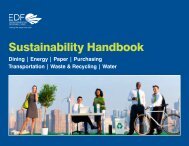
![Print version [PDF] - Environmental Defense Fund](https://img.yumpu.com/46812189/1/190x201/print-version-pdf-environmental-defense-fund.jpg?quality=85)
![Mercury Alert: Cleaning up Coal Plants for Healthier Lives [PDF]](https://img.yumpu.com/45587786/1/190x143/mercury-alert-cleaning-up-coal-plants-for-healthier-lives-pdf.jpg?quality=85)
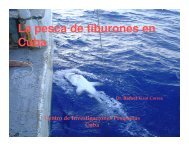

![Program Overview [PDF] - Environmental Defense Fund](https://img.yumpu.com/34005758/1/190x96/program-overview-pdf-environmental-defense-fund.jpg?quality=85)
